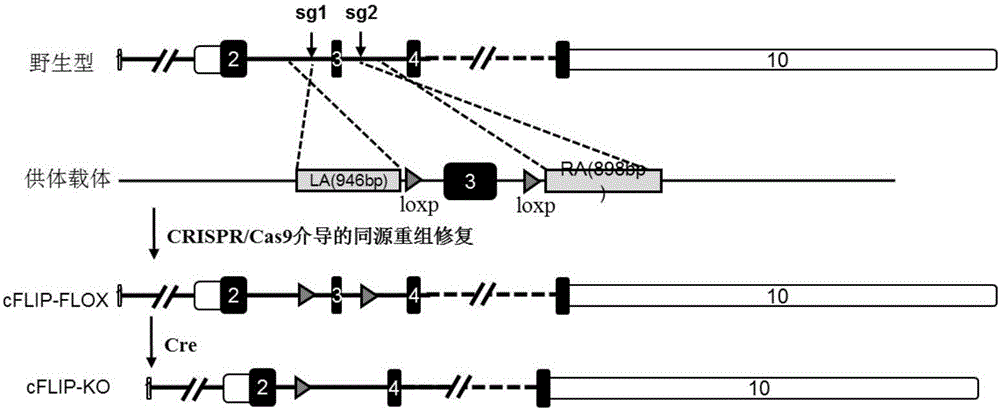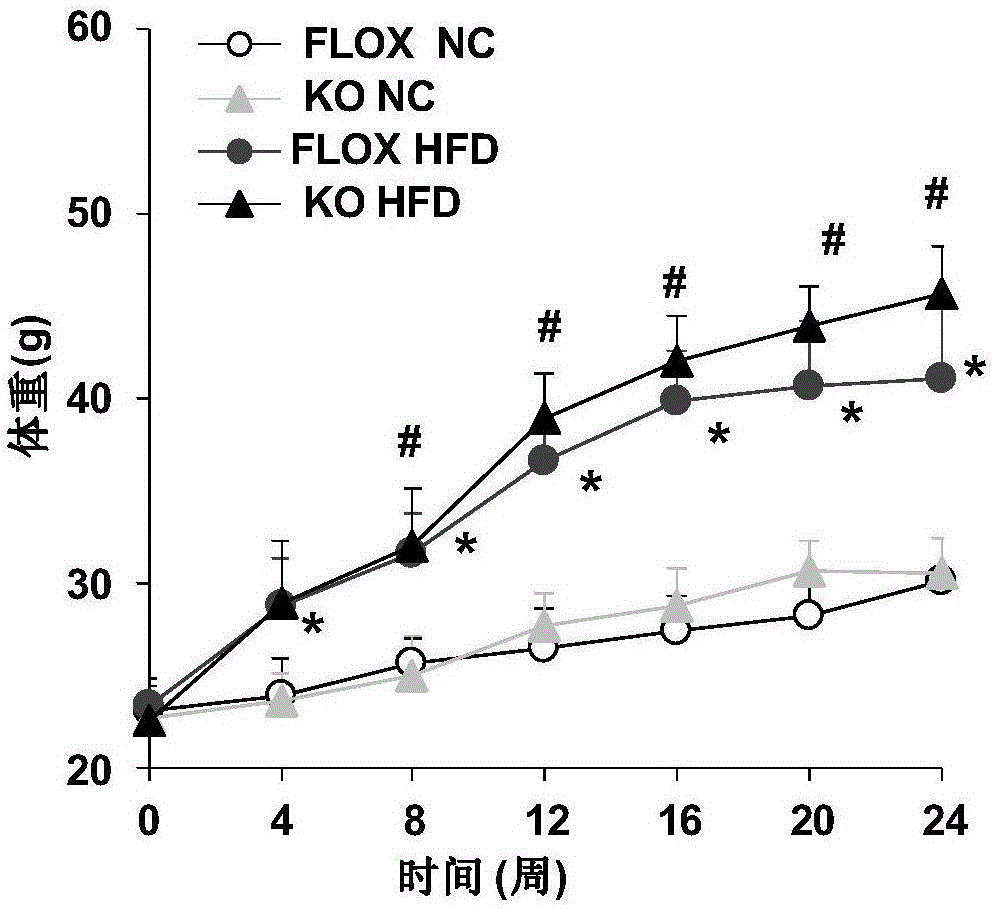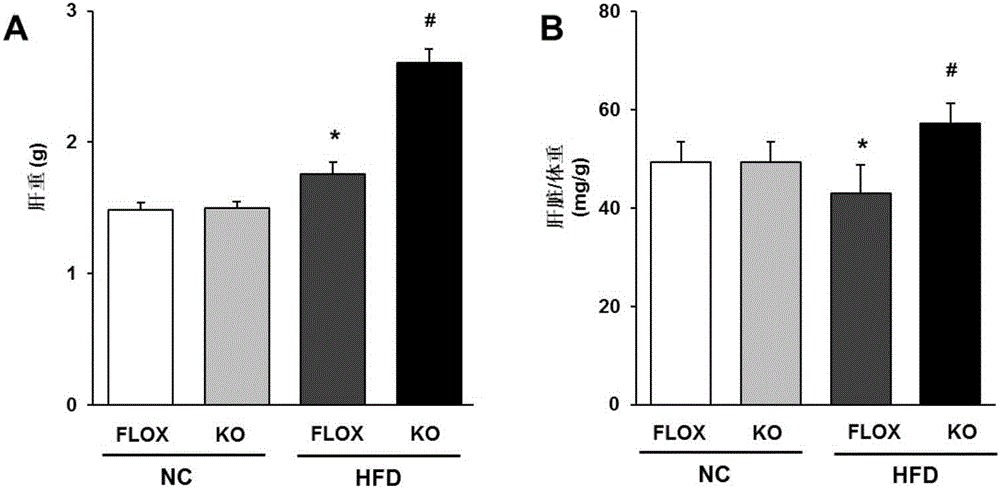Application of cellular Fas-associated death domain-like interleukin-1 beta-converting enzyme-like inhibitory protein to treatment of fatty livers
A fatty liver and liver technology, applied in gene therapy, peptide/protein components, preparations for in vivo experiments, etc., can solve the problem of no Caspase-8 proteolytic enzyme activity, etc., and achieve the effect of inhibiting fatty liver
- Summary
- Abstract
- Description
- Claims
- Application Information
AI Technical Summary
Problems solved by technology
Method used
Image
Examples
Embodiment 1
[0057] [Example 1] Obtaining mouse fatty liver (diet induced obesity, DIO)
[0058] (1) Grouping of experimental animals: 8-week-old, male, cFLIP-flox mice and cFLIP-KO mice were selected and given two special feeds, D12942 high-fat diet (High fat diet, HFD) and D12450B low-fat diet ( Normal chow, NC) feeding, that is, cFLIP-flox NC group, KO NC group, cFLIP-flox HFD group, KO HFD group, a total of 4 groups.
[0059] (2) The model induces the operation process through high-fat feed:
[0060] Using cFLIP-flox and KO mice, the DIO model was established, and phenotype correlation analysis was performed to clarify the role of cFLIP gene on fatty liver. Eight-week-old, male, cFLIP-flox mice and cFLIP-KO mice were selected and fed with two special diets, D12942 high-fat diet (Highfat diet, HFD) and D12450B low-fat diet (Normal chow, NC), respectively, namely There are 4 groups including cFLIP-flox NC group, KO NC group, cFLIP-flox HFD group, and KO HFD group. The fasting body wei...
Embodiment 2
[0061] [Example 2] Determination of mouse body weight
[0062] ①Fasting: fast the mice to be tested at 8:00 am (without water), and start the experimental operation at 2:00 pm.
[0063] ② Weighing: Weigh at 0 week, 4 week, 8 week, 12 week, 16 week, 20 week and 24 week respectively, put a small plastic bucket on the dynamic electronic balance, grab the mouse, put it into the weighing In a small bucket, measure the weight and record the data. Feed amount detection: After the weighing operation is completed, add feed to the mice, and record the amount of feed for the mice on the dynamic electronic balance.
[0064] Weight change results such as figure 1 As shown, cFLIP-flox mice were fed with HFD diet, and their body weight was significantly higher than that of their NC diet group from the 4th week. The body weight of cFLIP-KO mice in the HFD group was significantly higher than that of cFLIP-flox mice in the HFD group starting at week 8, and continued until week 24 (see figu...
Embodiment 3
[0065] [Example 3] Liver Gross Appearance Determination and Pathological Staining
[0066] (1) Terminal liver tissue collection
[0067] 1) After the mice were weighed, they were quickly killed by decapitation. Fix the mouse in a supine position, and moisten the hair on the chest and abdomen of the mouse with distilled water.
[0068] 2) Clamp the skin in the middle of the mouse abdomen with a pair of tweezers, cut the skin along the middle of the abdomen toward the head to the xiphoid process, and cut the skin toward the tail to expose the subcutaneous fascia and muscles layer by layer. organ.
[0069] 3) Quickly find and remove the liver of the mouse, place the removed liver specimen on sterilized gauze, wipe off the residual blood on the surface of the liver, place the liver in a sterile petri dish, and weigh it quickly. Part of the liver tissue after weighing was used to prepare frozen and paraffin sections, and the other part was stored in a -80°C refrigerator for dete...
PUM
 Login to View More
Login to View More Abstract
Description
Claims
Application Information
 Login to View More
Login to View More - R&D
- Intellectual Property
- Life Sciences
- Materials
- Tech Scout
- Unparalleled Data Quality
- Higher Quality Content
- 60% Fewer Hallucinations
Browse by: Latest US Patents, China's latest patents, Technical Efficacy Thesaurus, Application Domain, Technology Topic, Popular Technical Reports.
© 2025 PatSnap. All rights reserved.Legal|Privacy policy|Modern Slavery Act Transparency Statement|Sitemap|About US| Contact US: help@patsnap.com



